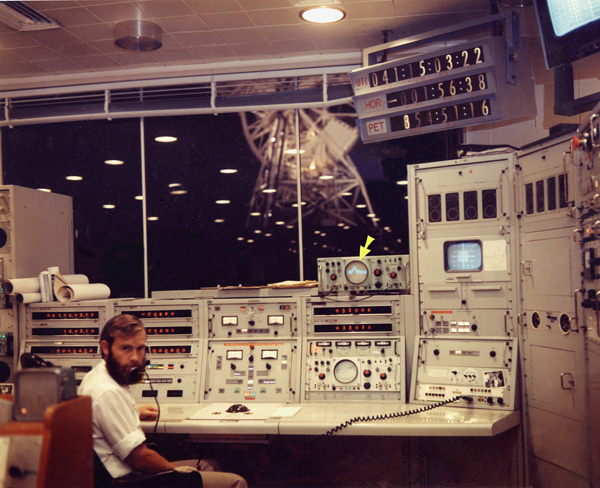
Hamish Lindsay at the HSK Servo Console



Hamish writes, "The picture was taken at 02:03:22 local time on February 11 1974, just three days after the last crew landed from Skylab.""Skylab was a busy time for us when we were tracking it, but between tracking times we would switch over to ALSEP or Deep Space missions and send the data over a microwave link to Tidbinbilla while our telemetry and computers were sending Skylab data to Goddard and Houston. When I say between times, Skylab was only in Earth orbit, so would appear for up to a max of 12 minutes every 90 minutes for 12 or so hours. then it would be below our horizon for the next 12 hours. During the 12 hours when a group of passes occurred, in the 70-odd minutes between successive passes we would use the time for the other missions. For ALSEP these times would also depend when the Moon was visible to us."
"To get the date and time the clocks in the top right hand corner tell us all: the top row is UT (we used to call it Zulu time); the second row is the horizon time, or the time the spacecraft is due to rise at the station. No help to us, except it tells us that Skylab was 1 hour 56 minutes away from popping up over the horizon. The third row is the mission phase time, or the time in hours (GET, Ground Elapsed Time) from each launch i.e there were four launches - original and three manned."
"Now the top row is showing 41 days, so that would be Feb 10. The time is 15:03:22Z, which would make it 02:03:22 on Feb 11 AEDT (I guess that's why it is dark outside!) The year would be 1974. I don't think the Phase Elapsed time is much help as the hundreds of hours digits are messed up, and it may not be used by this time as the manned missions had finished."
"Now just before you go reaching for Starry Night, I have checked it and Moon rise at Honeysuckle was 20:44 on the 10th and set at 11:07 on the 11th, so it would have been well up in the night sky at 0200."
"Finally, I took this picture with the camera on a tripod. The negative was 4 x 5 inches, so the image of the ALSEP signal (arrowed) is as you would get on the instrument panel. The flood-lit antenna is visible through the window. The depth-of-field did not quite stretch to me; 4x5 has very poor depth-of-field."